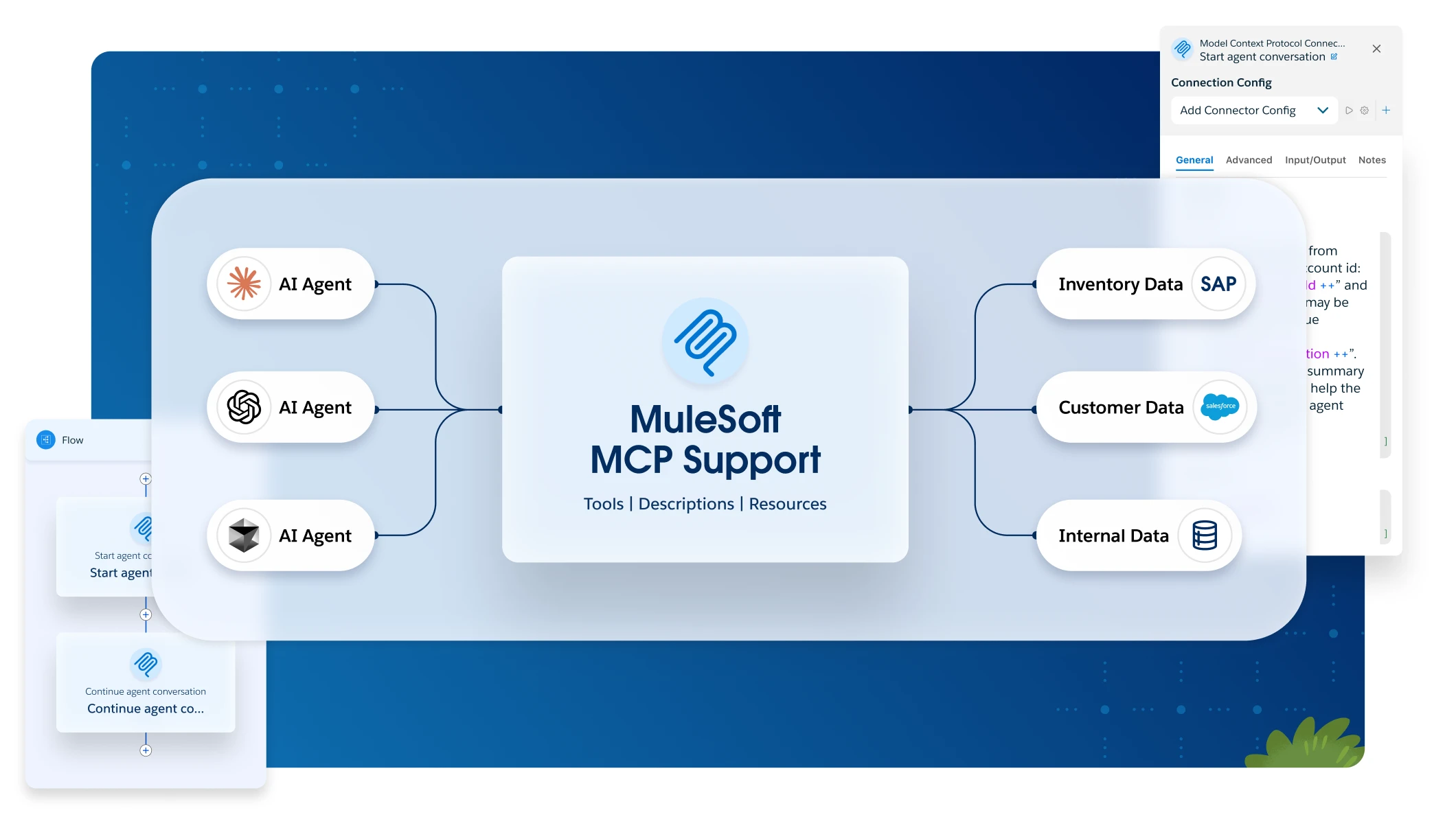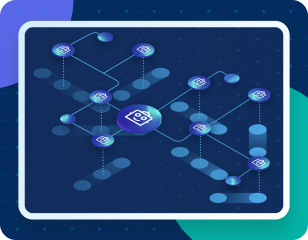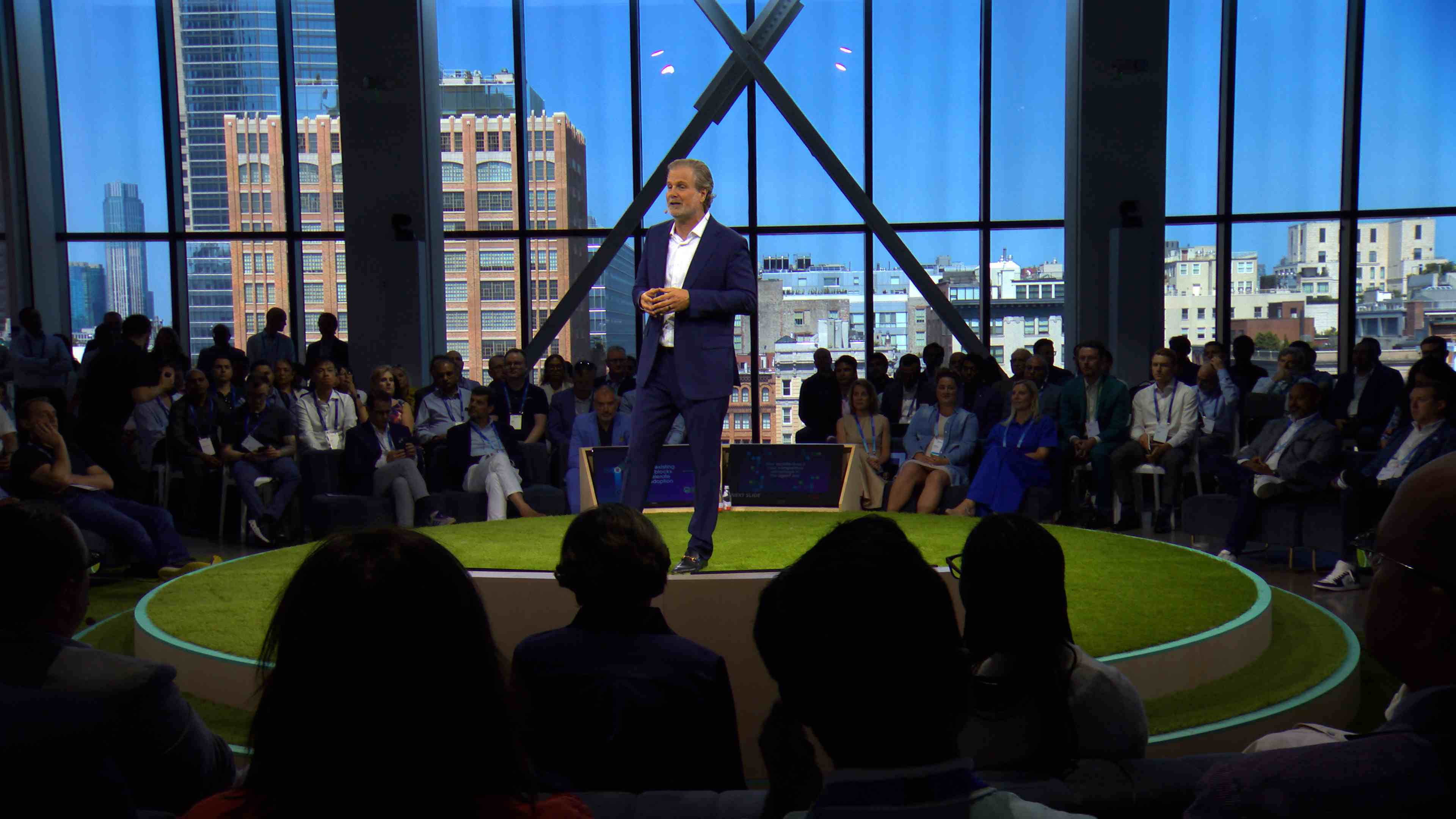The future of AI isn’t about starting over – it’s about building on the integration work you’ve already done. Across industries, enterprises have modernized their ecosystems by exposing data from legacy systems through APIs. By leveraging MuleSoft’s API-led approach, you’ve connected legacy infrastructure with cloud platforms, third-party services, and modern applications. Now, those same APIs can do more than move data – they can make it intelligent.
As generative AI, particularly large language models (LLMs), becomes a powerful force in enterprise transformation, organizations are realizing that true AI enablement requires more than just data access. It demands contextually relevant, up-to-date information, delivered to LLMs in a way they can interpret. This is where retrieval-augmented generation (RAG) becomes essential, and MuleSoft steps in as the enabler of integration and intelligent augmentation.
What is RAG architecture and why does it matter?
Retrieval-augmented generation (RAG) enhances the performance of LLMs by dynamically injecting relevant, external knowledge into the model’s input at runtime. Rather than relying solely on a model’s frozen training data, RAG enables your AI systems to pull real-time data from trusted enterprise sources such as APIs, content repositories, or knowledge bases to ground the LLM’s response in accuracy and context.
RAG architecture matters in enterprise contexts, where generic public LLM outputs often fall short of expectations around precision, security, and personalization. Whether you’re delivering customer support, automating compliance, or generating contextual content, your LLM needs to reflect proprietary, internal knowledge – not just publicly available data. RAG enables your AI system to retrieve the most relevant and up-to-date information at runtime, ensuring responses are grounded in current enterprise knowledge.
However, the effectiveness of RAG depends on your ability to retrieve, transform, and deliver that data to your LLM in a structured, context-ready format. That’s where MuleSoft becomes critical in helping you operationalize this pattern.
Orchestrating real-time intelligence through your existing enterprise API network
Enterprises have invested years building APIs to expose data from your ERP, CRM, HRIS, and other core and legacy systems as part of their digital transformation. These APIs form a robust foundation for modern integration by unlocking data silos, and now, for real-time AI.
Building on this foundation, one of the adopted approaches is the use of Data Cloud as a central repository for ingesting enterprise data (structured and unstructured) and using it to ground LLM prompts. Once harmonized, correlated, and enriched in the cloud, that data becomes a strong basis for AI-generated insights on curated data.
But what if you have to pull real-time structured data via existing APIs, enabling AI to act on the most current, in-the-moment enterprise data?
MuleSoft enables you to:
- Dynamically orchestrates calls to multiple existing APIs across enterprise systems to retrieve disparate data in real time
- Transform, enrich, and format the data with added context using DataWeave for LLM use
- Feed the structured output directly to the LLM and retrieve a grounded response for usage
This allows you to power LLMs with current, context-rich inputs like inventory levels during a flash sale, real-time fraud indicators in financial transactions, or up-to-the-minute aircraft maintenance logs prior to takeoff, unlocking real-time decisioning at scale.
Your existing APIs now do more than integrate; they become intelligent data pipelines powering real-time intelligent LLM experiences. This is the vision behind the MuleSoft AI Chain project, which helps you unify APIs, vector databases, and LLMs into an intelligent orchestration layer. Together, they convert your existing API landscape into a high-value enabler for context-aware generative AI.
Real-world scenario: Smarter lending decisions enabled by API-orchestrated AI
Consider a retail finance provider offering instant credit decisions at the point of sale. These decisions must be made based on limited prior knowledge about the customer, relying heavily on real-time data (e.g. identity verification, credit score, fraud risk indicators) – all accessed via APIs.
Here’s how you can implement this using RAG with an in-house, enterprise pre-trained LLM:
- Customer request: The process begins when a customer selects a Buy Now, Pay Later option at the point of sale, initiating a credit evaluation workflow in real time.
- Orchestrate and transform data: MuleSoft uses your existing enterprise API ecosystem to retrieve essential data (e.g. identity verification results, credit bureau insights, and fraud signals) in real time. This data is then transformed using DataWeave into a structured, enriched format suitable for AI processing.
- Data de-identification: Before passing any data to the LLM, personally identifiable information (PII) is masked or anonymized to meet enterprise-grade data privacy and compliance standards.
- Augmented prompt generation: The customer’s request is paired with the de-identified, enriched context to generate a targeted prompt. This ensures the LLM receives exactly the information it needs to generate a grounded, relevant response.
- Grounded response from LLM: The prompt is processed by your organization’s enterprise-grade, pre-trained LLM, which returns a context-aware output, such as a loan recommendation or risk rationale.
- Actionable outcome: The LLM output is sent to the user interface or decision engine for immediate action, empowering a seamless lending experience and accelerating the path to approval.
This real-time orchestration ensures your lending decisions are timely, responsible, and based on the most accurate data available.
Enabling RAG patterns with MuleSoft
With existing APIs, MuleSoft helps you:
- Orchestrate across systems: Retrieve and aggregate data from legacy platforms, cloud apps, and databases to build a 360-degree view
- Contextual data enrichment: Leverage DataWeave to structure and contextualize the data for LLM-ready prompts by adding business-relevant metadata or embedding domain-specific terminology
- Ensure transparency: Track which sources were used, how data was processed, how data was transformed, and how it influenced LLM outputs — enabling transparency, compliance, and fine-tuning.
- Optimize for performance: MuleSoft supports cost optimization by streamlining API orchestration and minimizing payload bloat and redundant calls — thereby reducing the number of tokens consumed in LLM interactions.
The key shift is not rearchitecting your stack but layering intelligence on top of it.
Applying RAG and MuleSoft across industries
The combination of RAG and MuleSoft can be applied across various industries:
- Healthcare: Deliver real-time clinical summaries by pulling lab results and EHR data at the point of care. Refer to MuleSoft’s AI Chain for Healthcare blog for real examples.
- Retail: Use real-time inventory, customer preferences and customer location to tailor in-the-moment promotions and recommendations at the point of sale or within a digital storefront.
- Banking: Combine live KYC and transaction signals to personalize onboarding or verify identity during digital interactions.
- Manufacturing: Access real-time data from ERP systems and production floor sensors to generate timely insights for equipment maintenance, supply chain adjustments, or shift planning and avoid production bottlenecks.
In each of the above cases, existing APIs serve as the foundation, with MuleSoft connecting the dots and LLMs generating value.
Turning API investments into AI acceleration
Enterprises don’t have to replace your existing systems to join the AI revolution. If you have invested in APIs, connectors, and governance, you are already ahead of the curve.
MuleSoft can now help you elevate those digital transformation investments by integrating RAG and LLM capabilities into your existing enterprise platform. By orchestrating reliable, real-time data retrieval and transforming it for AI readiness, MuleSoft turns your integration layer into an AI acceleration engine.
Your enterprise is already connected. Now it’s time to make it intelligent without rebuilding what already works.









